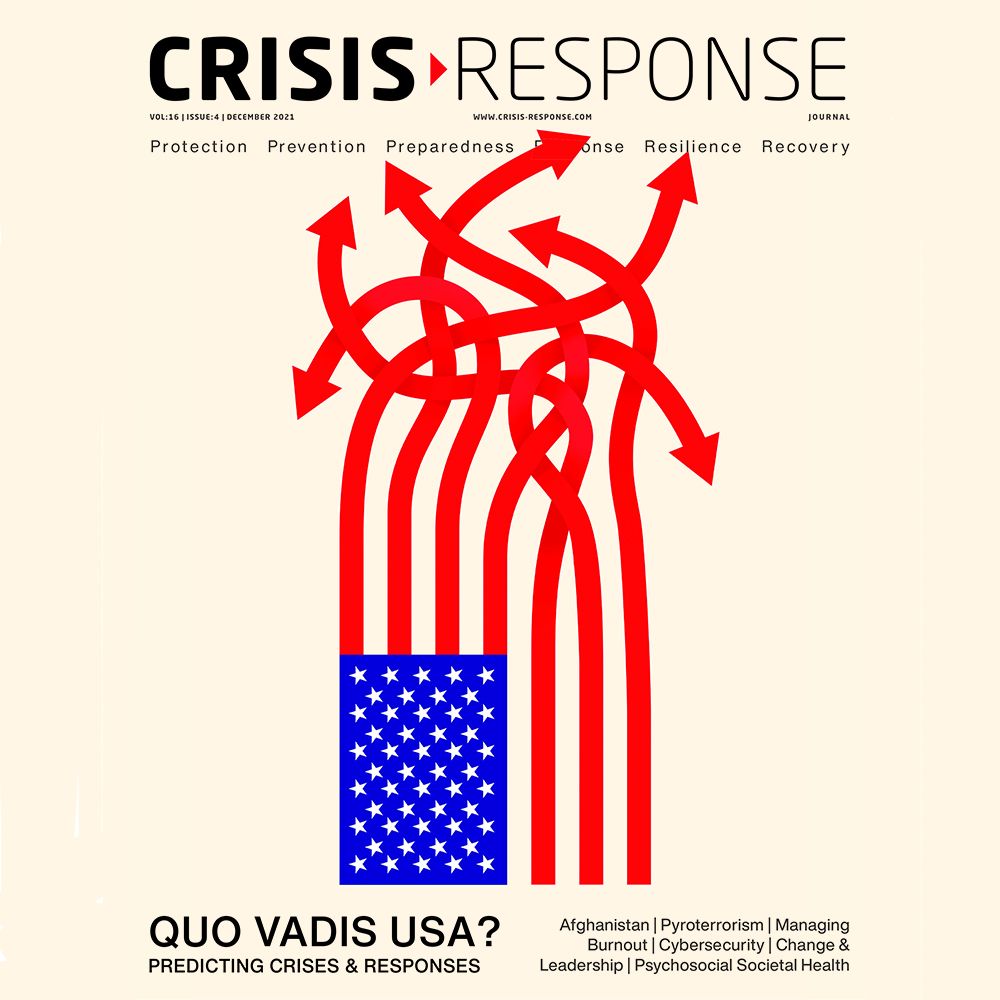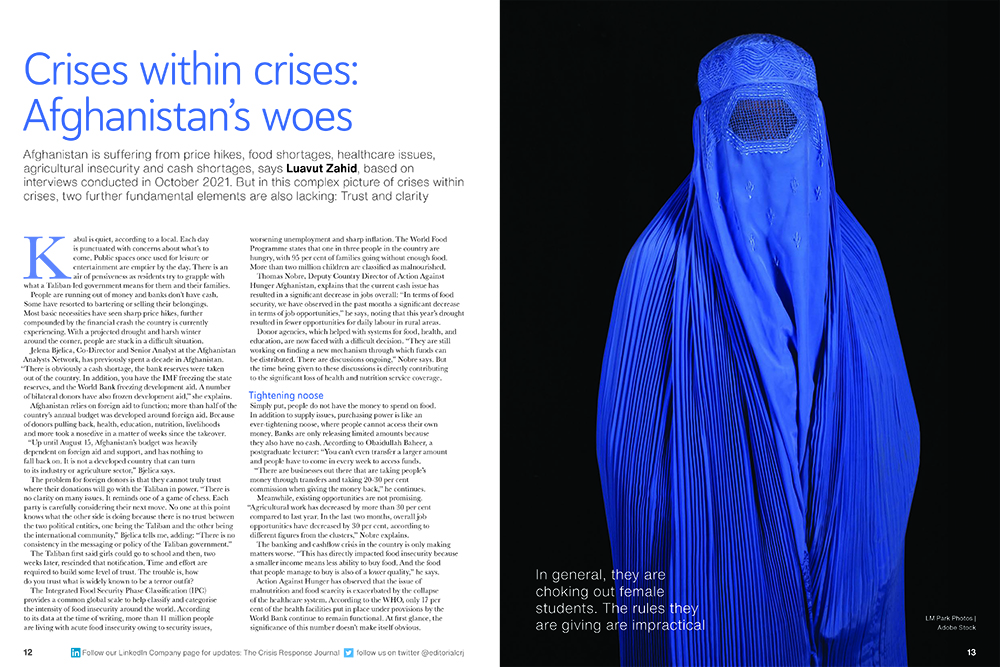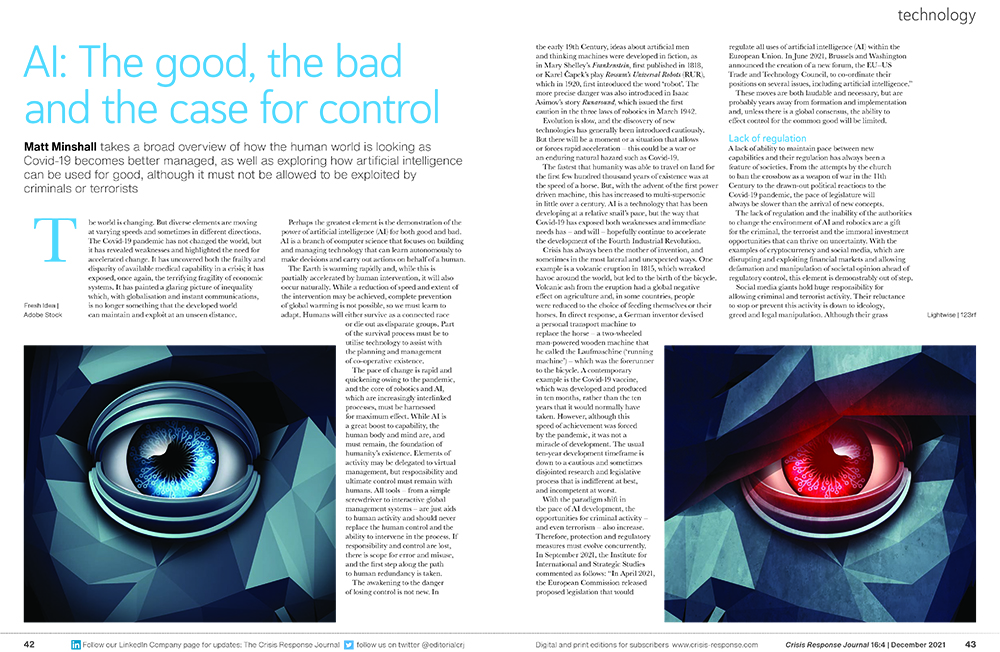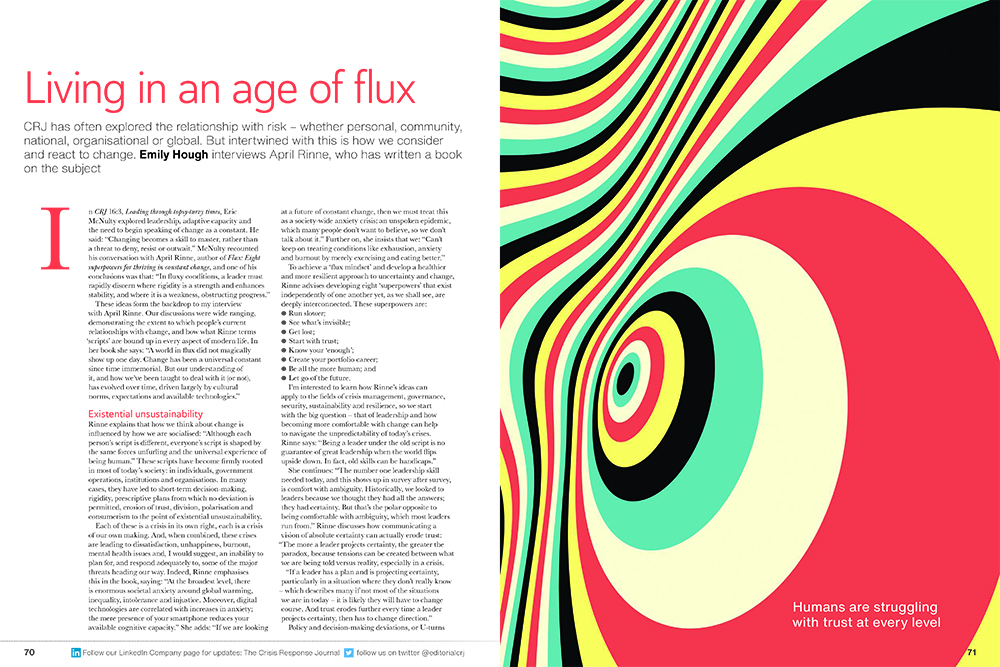CRJ 16:4 out now!
 December 2021 marks the end of our 16th volume and is a milestone in that this is our 68th edition! Here’s what's included in the last edition of Volume 16, which is being mailed out now.
December 2021 marks the end of our 16th volume and is a milestone in that this is our 68th edition! Here’s what's included in the last edition of Volume 16, which is being mailed out now.
And now is the time to speak to us about ideas and contributions for 17:1, due in early 2022...
This issue opens with commentary from Leonard Rubenstein, JD, LLD, who explores the drivers, logistics and rationalisations of violence against healthcare.
We move on to analysis of recent events in Afghanistan. Luvavut Zahid analyses possible effects on resilience and sustainability in the country, particularly in terms of aid, health, education, nutrition and livelihoods. Andrew B Brown provides a personal account of trying to get INGO staff to safety, while Barbara Kelemen looks at the strategic implications upon investors and donors with a particular focus on China’s engagement in Afghanistan.

Our security and analysis feature starts with a discussion by Olivier Cauberghs and Lisa De Smedt around the digital transformation of the three biggest players on the cyber-jihad battlefield, and Orjan Karlsson describes how the right-wing propaganda machine is being professionalised. The feature also examines SMEs and cyber attacks and the risks and consequences of electromagnetic pulse attacks, followed by Tony Moore’s look at the risk of pyro-terrorism.
The technology feature includes a case study from Key Network Partner PIX4D and an examination of how military processes can be applied to a civil environment with the aid of technology by another CRJ Key Network Partner, Initsys. Rounding off the feature is Matt Minshall’s look at the risks and benefits of artificial intelligence in the crisis sphere.

In our Leadership & Crisis feature, Beverley Griffiths of our Key Network Partner the University of Wolverhampton, calls for a code of ethics and conduct within the Emergency Management profession. Patrick Lagadec and Laurent Alfonso contend that we are failing to understand the threats and scale of the shocks lurking on the horizon and Lyndon Bird proposes ways to improve understanding of business continuity. This is followed by Thomas Lahnthaler discussing the role of facilitators during a crisis and Raphael de Vittoris’s exploration of how a multi-layered crisis management system was created for the Michelin Group and Jon Hall of Key Network Partner Resilience Advisors Network outlines the multiple achievements of the Crisis Management Innovation Network Europe (CMINE).
Turning more to the people side of crisis management, Andy Blackwell and Nina Smith share their experiences of mentoring and Magdalena Lind outlines a concept developed in Sweden to ensure long-term resilience and functional fitness of Intensive Care Unit personnel during the Covid-19 pandemic. Eric McNulty from Harvard’s National Preparedness Leadership Initiative (also a CRJ Key Network Partner) looks at the issue of burnout and leadership.
CRJ examines change in the next feature, which starts with Gill Kernick applying her research and experience to explain why we fail to learn from disasters. Kernick says that this is down to our failure to understand the nature of complexity, and an over-reliance on piecemeal versus systemic change. Continuing the theme, Emily Hough interviews April Rinne, author of Flux: Eight superpowers for thriving in constant change, to learn more about how our unhealthy obsession with certainty can hinder the quest for resilience. The feature concludes with an article by Stefan Flothmann, who describes the concept of The Disrupted Mind series and explains how crises offer the opportunity to shift societal mindsets and catalyse systemic change.
Advisory Panel Member Dr Jennifer Hesterman guest edits this edition’s Focus on the USA, in which three experts from the frontlines of law enforcement, fire and rescue and emergency response use scenario planning to scan the horizon for future issues. Matthew F Smallwood examines three scenarios that will have an impact on the ability of emergency services to serve their communities; Philip Galindo warns that current issues facing police departments include lack of adequate staffing, funding, the will to engage and citizen trust; and Robert Witham concludes that although the potential catastrophic failure of critical infrastructure as a cascading effect from a weather emergency keeps him awake at night, the solutions to response and resilience can lie within communities.

The edition next turns to exploring interconnections, with an article from Nadine Sulkowski explaining how governments and supranatural institutions can play a critical role in the cohesion and prosperity of society, along with environmental sustainability. Constance Marzell-Kyme argues that understanding the complex interconnectedness of cities can be of immense value in crisis planning and response, and Rob Shimmin lists the questions that should be asked of a major donor who offers financial assistance in a disaster.
CRJ also contains a round-up of recent conferences and exhibitions, and Jeannie Barr of the Emergency Planning Society (CRJ Key Network Partnership Member) outlines some of the issues that were discussed during the society’s recent event.
Finally, Claire Sanders speaks to Lorraine Wapling, an international Disability and Development Consultant, about her mission to further disability inclusions in organisations around the world.
To learn more about partnering with the Crisis Response Journal, click here, or to subscribe, click here.